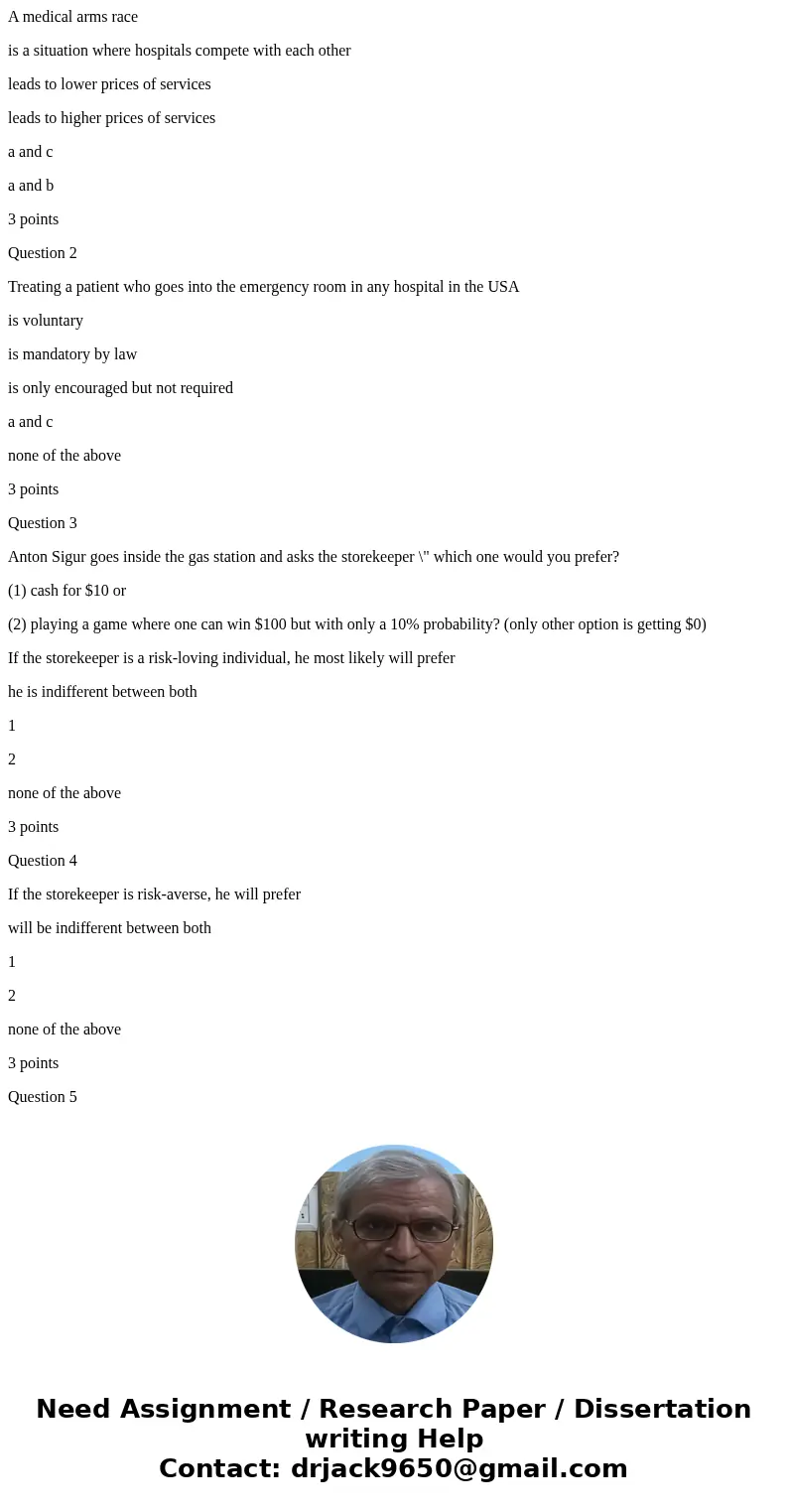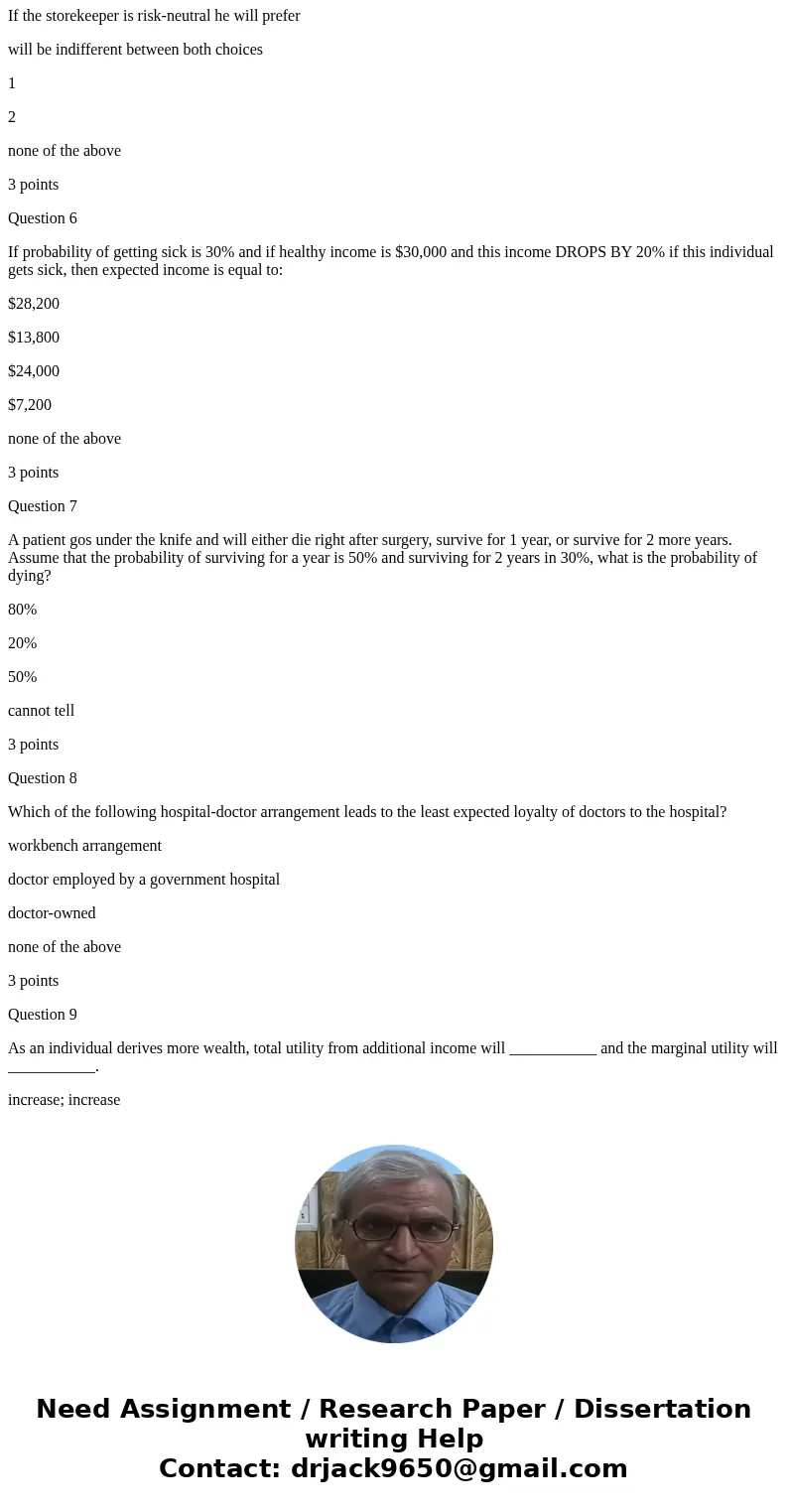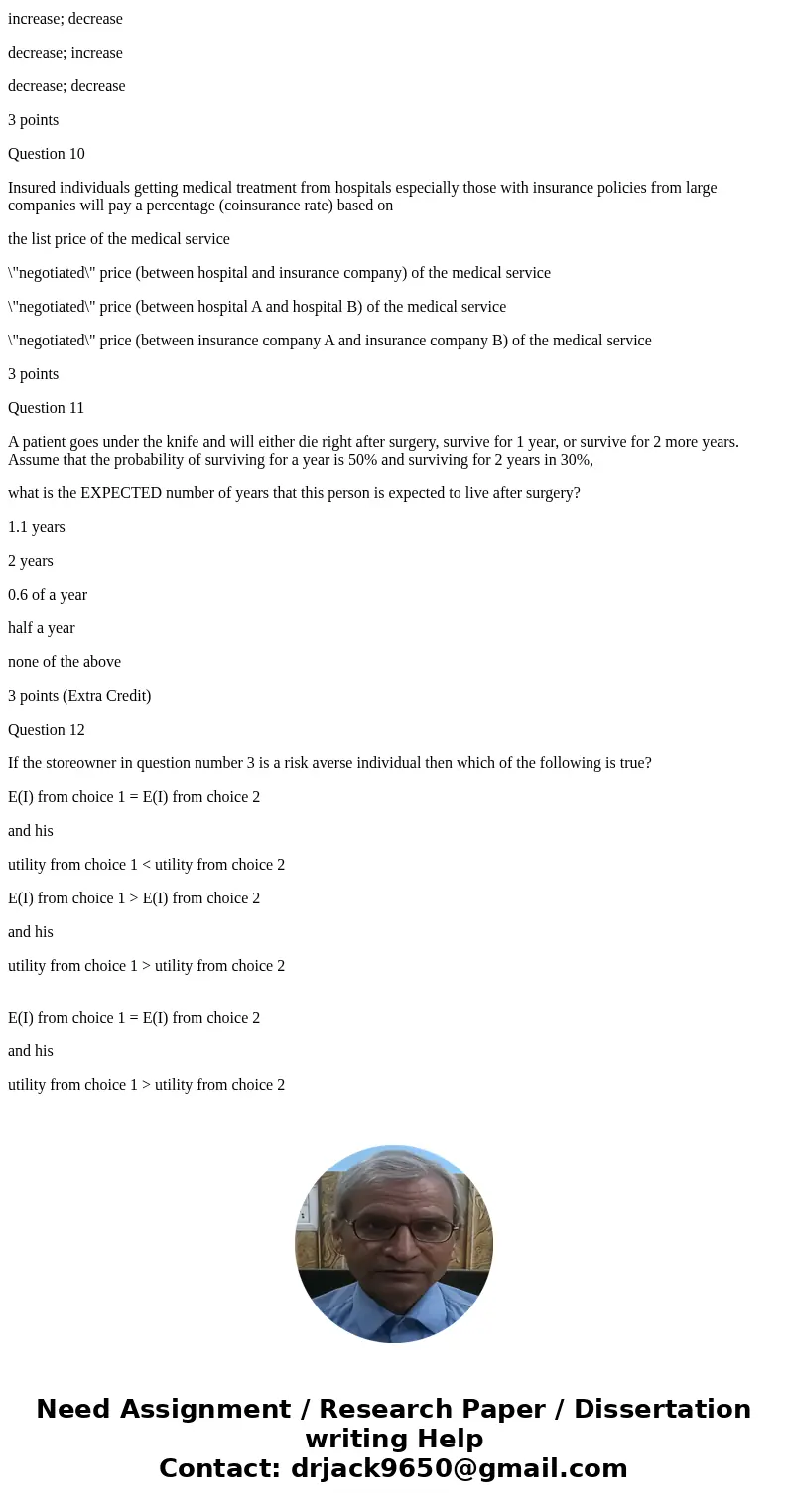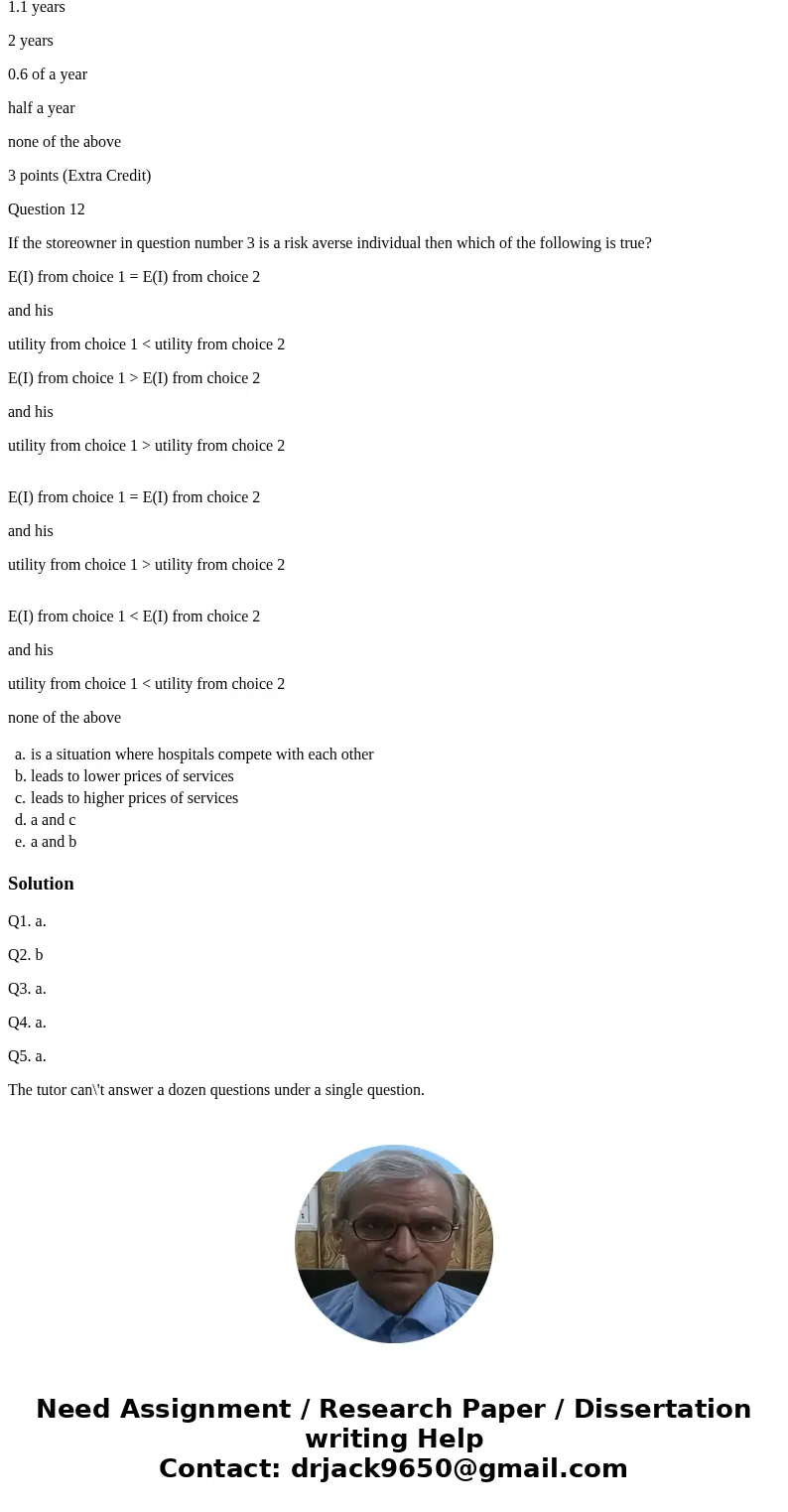A medical arms race is a situation where hospitals compete w
A medical arms race
is a situation where hospitals compete with each other
leads to lower prices of services
leads to higher prices of services
a and c
a and b
3 points
Question 2
Treating a patient who goes into the emergency room in any hospital in the USA
is voluntary
is mandatory by law
is only encouraged but not required
a and c
none of the above
3 points
Question 3
Anton Sigur goes inside the gas station and asks the storekeeper \" which one would you prefer?
(1) cash for $10 or
(2) playing a game where one can win $100 but with only a 10% probability? (only other option is getting $0)
If the storekeeper is a risk-loving individual, he most likely will prefer
he is indifferent between both
1
2
none of the above
3 points
Question 4
If the storekeeper is risk-averse, he will prefer
will be indifferent between both
1
2
none of the above
3 points
Question 5
If the storekeeper is risk-neutral he will prefer
will be indifferent between both choices
1
2
none of the above
3 points
Question 6
If probability of getting sick is 30% and if healthy income is $30,000 and this income DROPS BY 20% if this individual gets sick, then expected income is equal to:
$28,200
$13,800
$24,000
$7,200
none of the above
3 points
Question 7
A patient gos under the knife and will either die right after surgery, survive for 1 year, or survive for 2 more years. Assume that the probability of surviving for a year is 50% and surviving for 2 years in 30%, what is the probability of dying?
80%
20%
50%
cannot tell
3 points
Question 8
Which of the following hospital-doctor arrangement leads to the least expected loyalty of doctors to the hospital?
workbench arrangement
doctor employed by a government hospital
doctor-owned
none of the above
3 points
Question 9
As an individual derives more wealth, total utility from additional income will ___________ and the marginal utility will ___________.
increase; increase
increase; decrease
decrease; increase
decrease; decrease
3 points
Question 10
Insured individuals getting medical treatment from hospitals especially those with insurance policies from large companies will pay a percentage (coinsurance rate) based on
the list price of the medical service
\"negotiated\" price (between hospital and insurance company) of the medical service
\"negotiated\" price (between hospital A and hospital B) of the medical service
\"negotiated\" price (between insurance company A and insurance company B) of the medical service
3 points
Question 11
A patient goes under the knife and will either die right after surgery, survive for 1 year, or survive for 2 more years. Assume that the probability of surviving for a year is 50% and surviving for 2 years in 30%,
what is the EXPECTED number of years that this person is expected to live after surgery?
1.1 years
2 years
0.6 of a year
half a year
none of the above
3 points (Extra Credit)
Question 12
If the storeowner in question number 3 is a risk averse individual then which of the following is true?
E(I) from choice 1 = E(I) from choice 2
and his
utility from choice 1 < utility from choice 2
E(I) from choice 1 > E(I) from choice 2
and his
utility from choice 1 > utility from choice 2
E(I) from choice 1 = E(I) from choice 2
and his
utility from choice 1 > utility from choice 2
E(I) from choice 1 < E(I) from choice 2
and his
utility from choice 1 < utility from choice 2
none of the above
| a. | is a situation where hospitals compete with each other | |
| b. | leads to lower prices of services | |
| c. | leads to higher prices of services | |
| d. | a and c | |
| e. | a and b |
Solution
Q1. a.
Q2. b
Q3. a.
Q4. a.
Q5. a.
The tutor can\'t answer a dozen questions under a single question.




 Homework Sourse
Homework Sourse